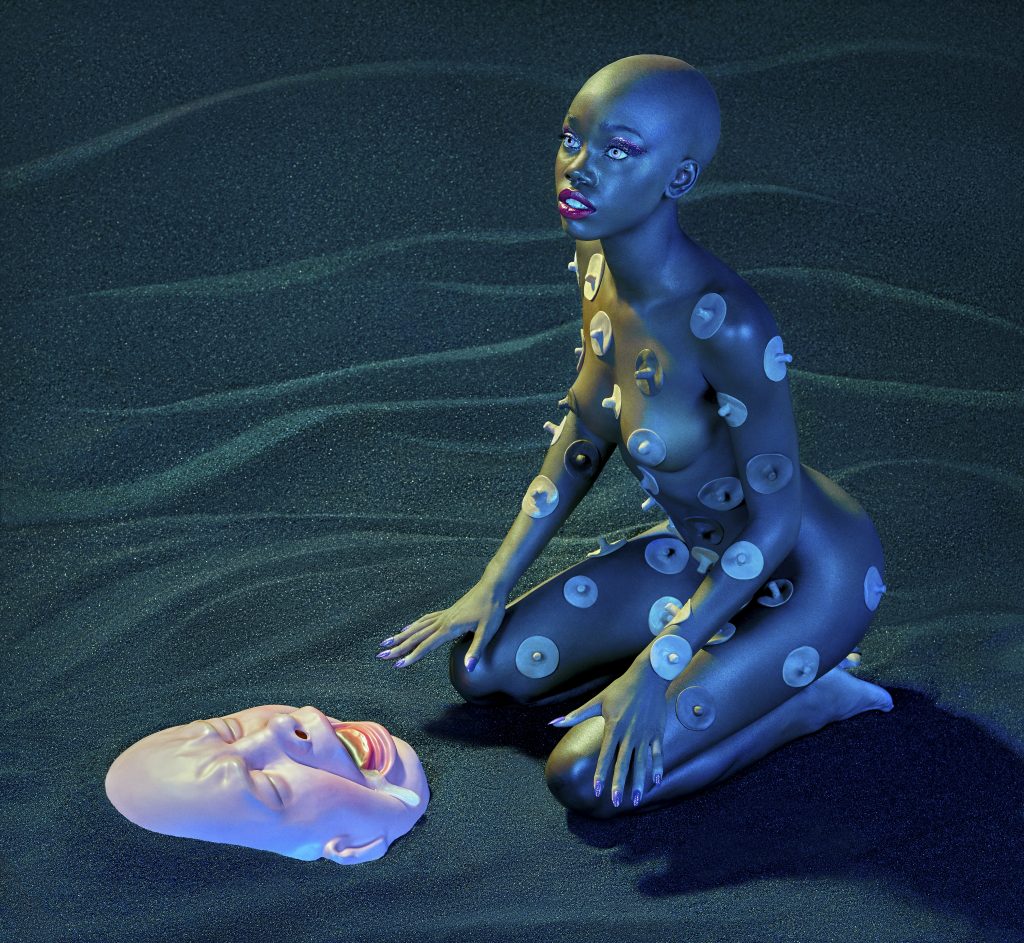
Salvjiia, 19, is part of a subculture of self-created oddities and aliens proliferating online and, more recently, leaching into the world of fashion. The most baldly subversive among them, Instagram personalities with mysterious or sometimes off-putting handles like Fecal Matter, Forbidden Knowledge and Genesisfawn, are turning to prosthetics, extreme makeup, props, bodysuits and digital effects to mask the commonly held notions of what it means to be human. If their otherworldly appearance seems familiar, the likelihood is that you’ve seen it in a tamer form before. Versions of this spectral look date at least from the 1970s, when David Bowie introduced Starman, his pallid alter ego, and appeared as an alien in “The Man Who Fell to Earth.” Today there is Maleficent, Angelina Jolie’s arch villain, her character’s steeply angled cheekbones and imposing crown of horns suggesting some demonic alien race. Now comes fashion, intent on mining this odd aesthetic for impact by releasing onto the runways streams of bloodless-looking and enhanced models that seemed to have beamed down from Jupiter. The look’s latest champion, Demna Gvasalia of Balenciaga, introduced a phalanx of these human anomalies in his spring 2020 show, all chalky complexions and vulcanized lips and with prosthetics augmenting their otherwise sunken cheeks. His intention, according to his show notes, was to “play on beauty standards of today, the past and the future.” Streamline magazines, too, have climbed aboard, not least of them American Vogue who’s known the world over as the tamest of the magazine incarnations, which posted an online feature last year about Fecal Matter, the Instagram handle of Hannah Rose Dalton and Steven Raj Bhaskaran.
Robert Reed, a 26-year-old designer in Brooklyn, creates second-skin costumes — wearable art, he calls them — with horns, masks, winged shoulders and elevator shoes in reaction to what he views as an over-stratified society. He documents his work on Instagram. Alessandro Michele, the creative director of Gucci, anticipated the alien invasion more than a year ago with a spring 2018 collection modeled by anemic-looking women, their faces veiled or masked by balaclavas, some toting replicas of their own heads. As an aesthetic, it represents, Michele’s suggested, a coming golden age of pan-gender, post-racial, post-sexual identity. “We are in a trans-human era for sure,” he said at the time of his show. “We have to decide what we want to be.” Pop culture’s embrace of such sci-fi extremes comes and goes. Last year, FKA Twigs and ASAP Rocky collaborated on a video in which they appear as glamorous extraterrestrials flashing talons and neon-tone masks. “The alien aesthetic has historically been most popular during extremely conservative periods,” said Daniel L. Bernardi, a documentary filmmaker and a professor of cultural studies at San Francisco State University. “It reflects and addresses the tensions of a divided society.” In the age where everything and anything goes being an alien is the least of our problems.
Story by Jen Ruane.

